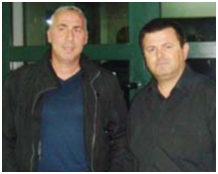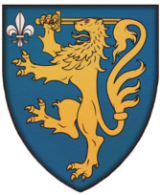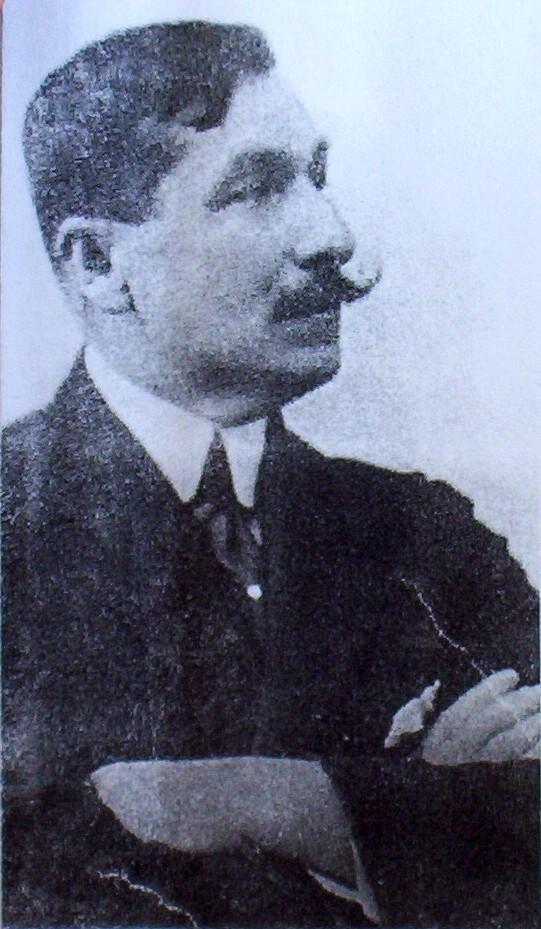Following is the story of the closest distinguish figure to the great Albanian family of the Toptanis.
– What are Ajten Toptani’s testimonies about his grandfather Murat Toptani, son-in-law of Naim Frasheri.
– For the first time, the Albanian public is acquainted with Said Toptani’s incredible story.
– How did Said Toptani become the most active participant of the French bourgeois revolution of 1848?
– Who were the Toptanans who became the signatories of today’s historical commission of the Albanian alphabet?
– Said Toptani’s strange friendship with Christoforidh and the mutual affinities he associated with the famous Frasherians.
– His successive arrests and terrible life in the most notorious prison in the empire, where he had been confined to Hoxha Tahsin.
– His death in Asia and his son’s arrival in troubled Tirana.
– What did the Austro-Hungarian consul say about Said Toptani’s sons and mainly about Murat Toptani, who had become Naim Frasheri’s son-in-law.
– Murat Toptani’s arrest and confinement in the dreaded North African Tripoli prison, which managed to become a true “Count Monte Cristo”, escaping in the most spectacular manner.
(Continued from previous issue)
Mr. Ajten Toptani, I would like to know your opinion, as a bookmarker and descendent directly from a large Albanian family, when the national movement in Tirana really started?
Prof. Kristo Frasheri describes in the history of Tirana: In the mid-19th century, the citizens of Tirana were still far from national or independent demands. Tyrannical society was still overshadowed by the shadow of many Islamic minarets and tekkes. There was a small number of pilgrims, imams, shaykhs and dervishes on the streets. The national movement in Tirana emerged during the shock caused by the eastern crisis in the 1970s, more precisely in the years of the Albanian League of Prizren. “The one who fired the first spark of patriotism in Tirana was Said Seremedin Toptani. As evidence he brings the memorandum against the cleavage of the Albanian lands to the Congress of Berlin on June 22, 1878. hearts of tyrants Said and Selim Bey Toptani lined up with supporters of the national movement, as well as veteran General Fazil Pasha Toptani, who was an important supporter of Ismail Qemali.
And what is the further contribution of the Toptani family?
There was also Ali Bey Toptani, their cousin, who remained loyal to respecting the borders of the Ottoman Empire. After Said completed his first studies in Istanbul, he continued his studies outside the empire. He studied mathematics and science in the city of Venice. S. Toptani did his studies at the University of Sorbonne in Paris, which according to Alexander Gorollovsky (Russian historian), together with the progressive Turkish poet Namik Kemal and the poet Shinasi (whose name was remembered by his nephew) in the movement of the French Bourgeois Revolution of 1848, actively fighting in barricades. In 1849 he returned to Istanbul and worked at the Imperial Supreme Council. After four years he was appointed Secretary of the Embassy of the Empire in Paris, where he worked for 2 years. Returns to Istanbul and is accused of suspicious separatist opinions and attitudes. In cultural life he is known as a connoisseur of oriental languages, constitutionalist, publisher of trilingual dictionaries: Persian, Turkish, Arabic. He held high office in Egypt and the Caucasus as “transferred”. In 1852 he meets in Tirana with the renowned scholar and Albanologist Johan George Fon Hahn: “I had the opportunity to see a very cultured boy, who was a philologist of Oriental, Persian and Arabic languages but who had lived in Paris for many years and therefore spoke a fluent Frenchman and was the younger brother of the ruler of Tirana. “
Where is his contribution in the interest of the homeland evidenced?
The contribution to the country is evidenced in the construction of the first secular school in our country (accreditation, where many subjects were taught in different sciences such as mathematics, literature, physics, and the foreign language was French), with an approximate program of unique European schools, at its own expense. Continuing prayer at the Ministry of Education of the Higher Gate he managed to open it in October 1858, when until then there were only a few religious schools in Albania.
Could you elaborate further?
Contributed to the telegraph linking Edren, Shkodra, Tirana and Elbasan.
In 1870, he became a member of the Albanian Alphabet Commission, headed by Jani Vreto, etc., along with his uncle, Sulejman Pasha Toptani.
In 1877, he became a member of the Committee for the Protection of the Rights of the Albanian Nationality under the leadership of Abdyl Frasheri. Participant in the Albanian League of Prizren, under the leadership of Abdyl Frasher, along with his cousin, Selim Toptani.
Said Toptani had a great friendship with Constantine Christoforidhi, and the friendship with the family of the Frasherians of Permet in Istanbul was not only due to the national cause, but was strengthened by several mutual marriages.
Who were his children?
Said, because of his activity, was interned in remote areas of the Caucasus. There he fathered two sons, Murat and Refik. There were also two daughters, Vesimene and Bejie. Murad married Naim Frasheri’s daughter Asie, and Vesima married Naim’s younger brother, Mehmet Frasheri.
Was he interned?
Because of his activities he was arrested three times by the High Gate. He spent the last years of his life in the infamous Judukule Prison (the White Tower) as a political prisoner. According to his father’s accounts, he was convicted of Baba Myrton and Hoxha Tahsim. The cells of punishment had small windows with bars, and when the tide came, the sea water reached the prisoner’s chest.
When was he released?
He was released when power in Turkey changed, sick and almost blind. He died shortly after his exile in Bey-Basar, Asia Minor, in 1882.
What about your grandfather, Murat Toptanin, what can you tell the broad reader?
Murat Toptani was born in July 1863 and died in February 1918. He is the elder brother of Refik, son-in-law of Naim Frasher, patriot, military, poet, publicist, painter and sculptor, wonderful rider, teacher and itinerant, who worked hard to introduce and spread the Albanian language in Turkish schools. He was fluent in several foreign languages.
Where was he born?
He was born in Aka, (Caucasus) at the time of the exile of his father, Said. He began his studies at Istanbul’s Madam Fira School, while continuing his studies at the Imperial College of “Gallata Saraj” in Istanbul as well. While attending classes at Madame Fyra’s French school, since his father was a friend of the Frashëri family, he lived in a house near them that they had provided for him. His father’s education and contact during his schooling in Istanbul, and especially the conversations he had – first with Abdyl Frasher in his home and then with Naim and Sami – played a major role in the attitudes and shaping of his education. its generally.
He became the son-in-law of Naim Frasheri?
Yes. Upon graduating from high school in 1894, and after marrying Aseia in 1895, Murat and his wife settled in Tirana, devoted entirely to the national cause.
What was the political situation of the country when it settled in Tirana?
It should be noted that at that time the political situation in Tirana was quite turbulent. According to reports from the Austro-Hungarian consulate in Durres, Said’s two sons, Murat and Refik Toptani, stood at the top of the second group. With them were their three cousins, brothers Abdi, Masar and Hamit Toptani. These three were the sons of Adam Toptani. Refiku and Murati form the Albanian nationalist club “Bashkimi” in their home as opponents of Mufti’s “Iftihad” party, pro-Turkish government of Musa Qazimi. An important role in the Albanian resistance in Kosovo at this time was played by Haxhi Zeka, who maintained strong ties with the Frashëri brothers and Murat Bey Toptani.
It is worth mentioning that in the chronicles of the time, Murat Toptani is noted as an Albanian language teacher in the Highlands of Shkodra, Durres, Elbasan, Pogradec and elsewhere.
At this time Murat Toptani designed the much-awaited promenade for the High Gate?
Yes, it is very true. In December 1896, the population of the slope province sent a promo to the High Gate and the ambassadors of Austria-Hungary and Russia in Istanbul demanding recognition of the Albanian nationality. This promo, which was signed by 23 representatives of the population of the slope, was compiled by Murat Toptani.
In this regard, a great propaganda for the dissemination of national ideas and anti-Ottoman resistance during 1896 in Central Albania and throughout the vilayet of Bitola, especially in Tirana, Kruja, Elbasan, Ohrid, Struga, etc., was done by Hamdi Ohri and Dervish Hima, with whom Murat Toptani and Refiku worked closely.
Do we see the Toptanis alongside the Austro-Hungarians?
The Toptanis were generally inspired and supportive of the Austro-Hungarian empire as a supporter of the Albanian cause, and therefore maintained links with the consuls and its representatives in Albania.
You also mentioned vaguely that their contribution exists exactly towards the Albanian school?
In 1897, Vienna decided to open an Albanian boys’ school in Tirana, with the task of organizing Murat, Refik and Abdi. The Albanian school was originally opened in the house of Osman Elez, with Shkodra teacher Filip Ashiku. The same year, Murat was arrested by the High Gate, and the charges against him were that he supported the idea of Albania’s autonomy as well as efforts to unite Central and Southern Albania with the Hadji Zeka Covenant, working to build societies and branches. Albanian Committee in Shkodra, Peja, Gjakova, Mat and all over Tuscany.
Was there a public reaction to his arrest as a celebrity at the time?
The arrest of Murati had a great reaction in the press of that time, especially in the newspapers of Albanian societies in Italy, Romania, America, Cairo, Greece and others. Following Murat’s incarceration and internment, Dervish Hima continued to maintain contact with his brother Refik Toptani, through whom he provided access to Albanian books, newspapers and other propaganda material, arriving from Bucharest to Bitola and from there to Struga, Elbasan. and other centers.
How did the story of his prison go?
Murat Toptani, after being held prisoner for some time in Bitola, was exiled from Albania. First in the Gallipoli of the Dardanelles and later in Tripoli, North Africa, where he was confined to the infamous Tarabuluz Garba prison. By mid-1898, Murat along with his father Ahmet of Prishtina and the famous Nevrus Gostivishti, as Mit’had Frasheri writes, managed to escape from the prison of Tripoli, crossing the borders of the Ottoman Empire.
Where did it end?
He first went to Naples and then settled in Brindisi, Italy. Escaping the prison was assisted by Arberesh Anselmo Lorechio, publisher of the newspaper La Nazione Albanese in Brindisi and Nexhip Kajca.
I believe that the escape from a prison of such security that impressed the powerful empire of the time was impressive?
Murat Toptani’s escape also echoed in European diplomatic circles, especially Austro-Hungarian and Italian ones. Meanwhile, the escape was not well received by the High Gate itself and some of its supporters from the ranks of the great feudal lords, such as Syr Bey Bay Vlora, Esat Toptani and others.
Where did he live after that?
He remained a fugitive in Brindisi, where he began collaborating with Anselmo Lorekio in his paper. There Murati published the devotional article “Albania of Albanians”, in which he wrote: “Never did the hope and desire of freedom for Albanians ever stop” and the poems “Brotherhood”, “Sword of Skanderbeg” etc. In a letter dated July 20, 1898 to Dr. Ibrahim Temos, Murati wrote from Brindisi: “I have dedicated my life to Albania and the Albanian brothers. As long as I have one drop of blood, I will shed it for my beloved motherland, wherever I may be, whatever it may be.”
I am curious to know what was his relationship with the famous Faik Konica?
For Faik Konica he was one of the collaborators and one (for a long time) of his best friends, but on the other hand, Faik by his nature, did not spare Murat’s criticism and praise. In his fascinating document in the Vienna Archive, handwritten in the French language “National Renaissance Submission” he writes of it: Murat Bey is a passionate patriot, son-in-law of Naim, but of a poorly enduring spirit, a painter of a poet … but I say with conviction that he, together with the Marquis of Lauleta, are our two heirs on a fictional throne. “
– written by Fatos Veliu


